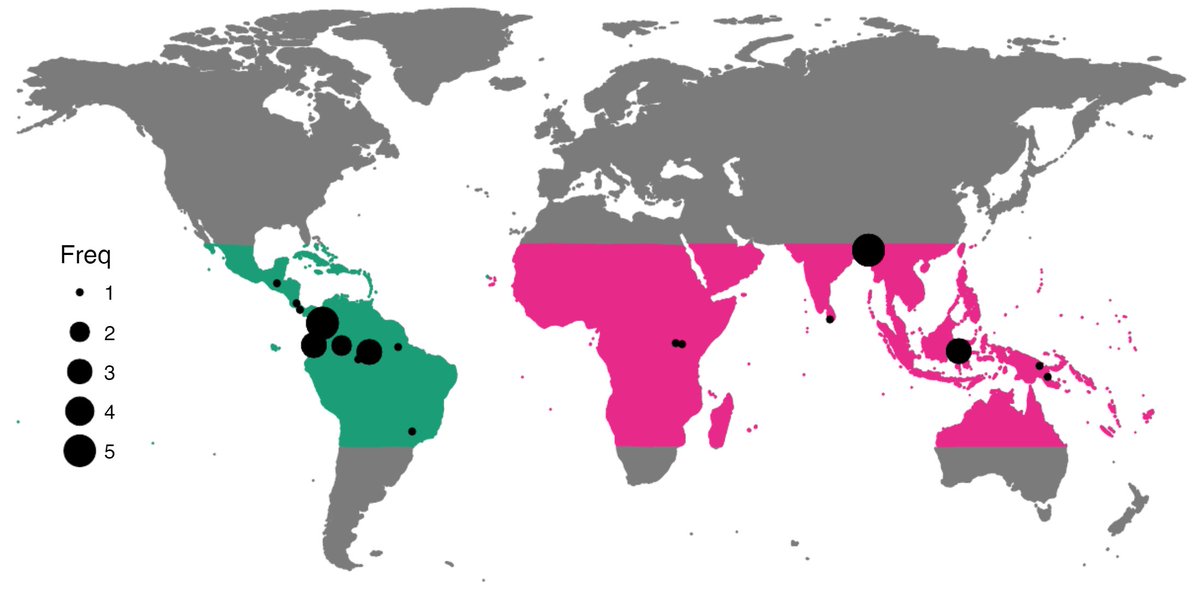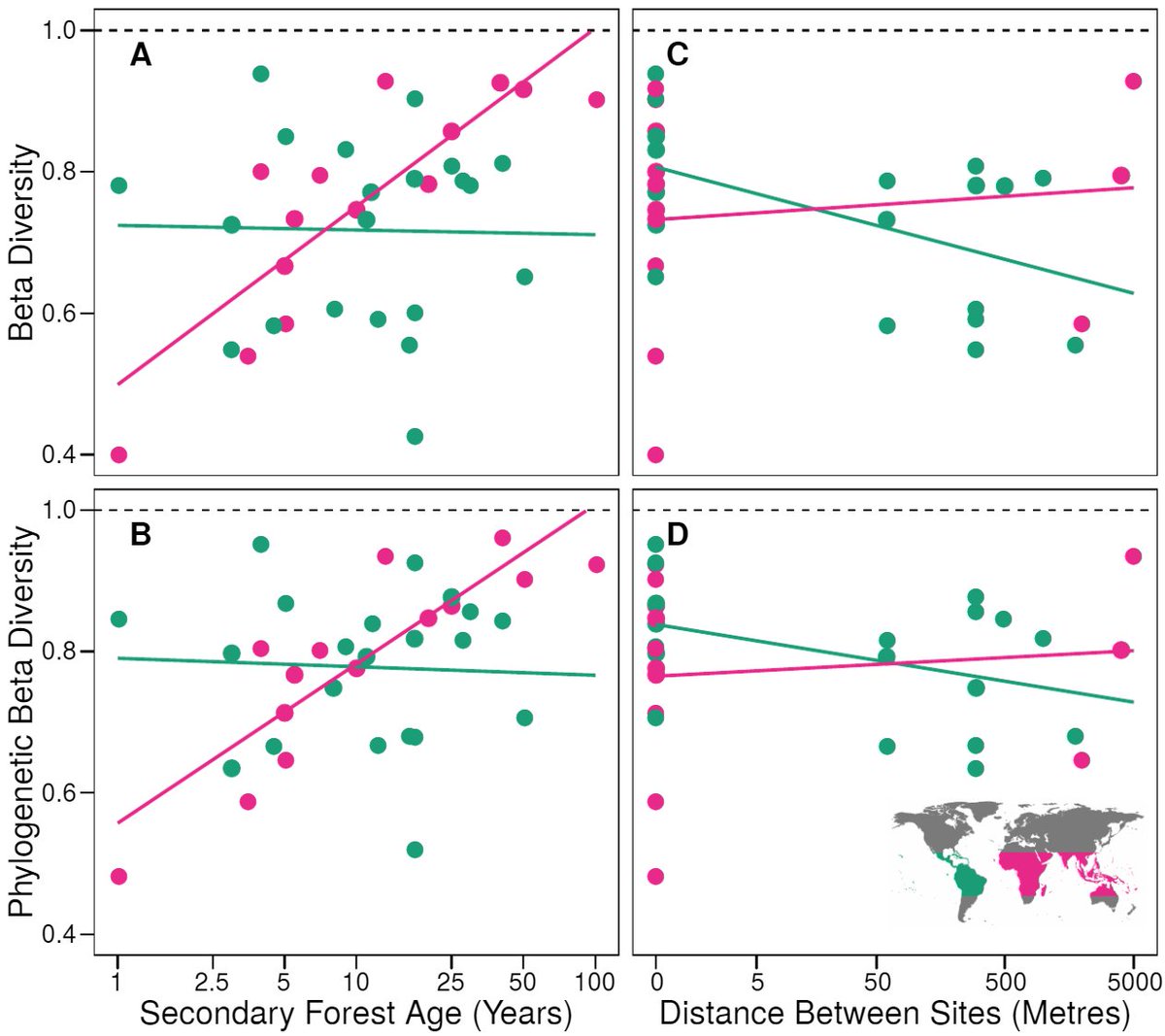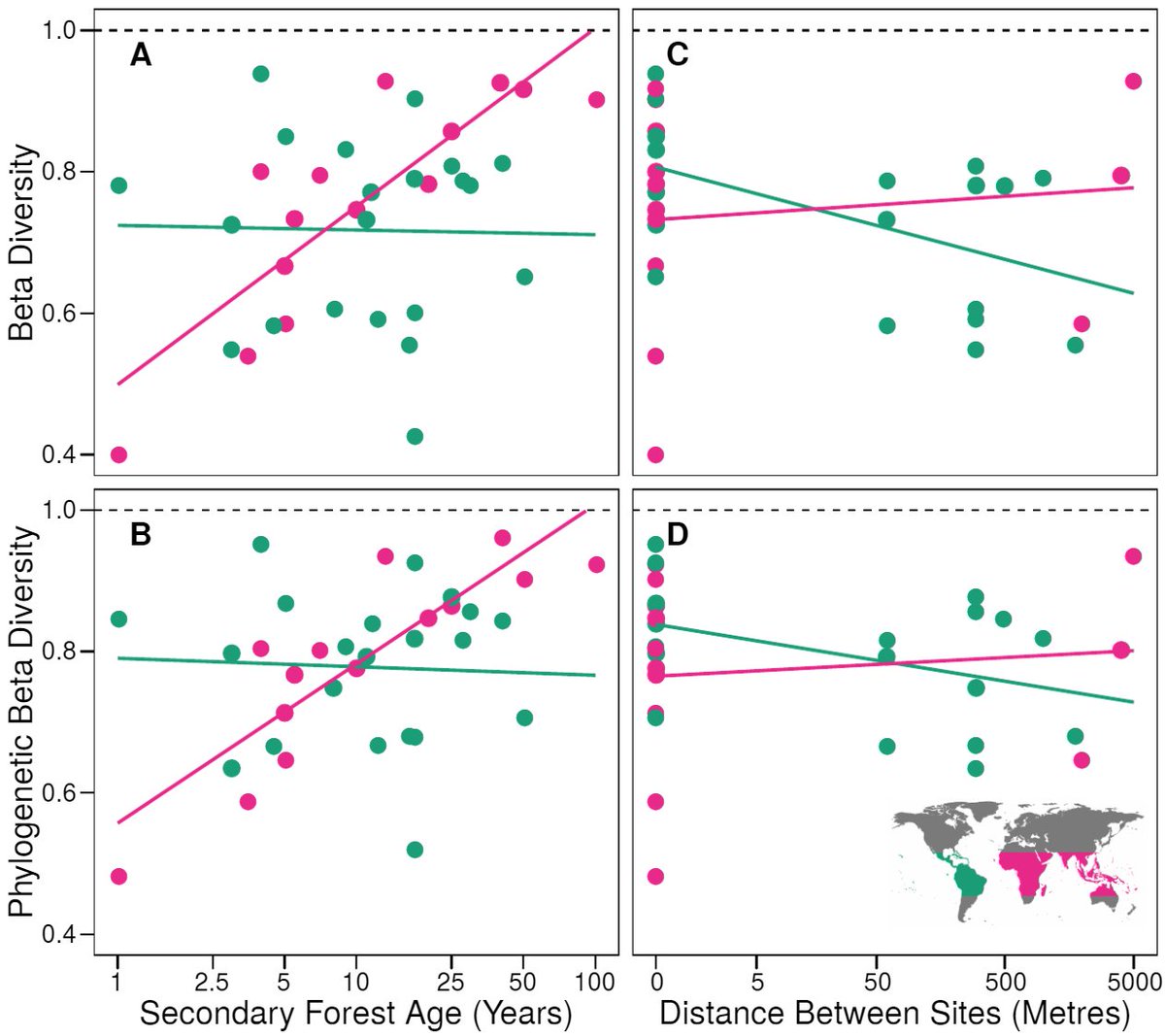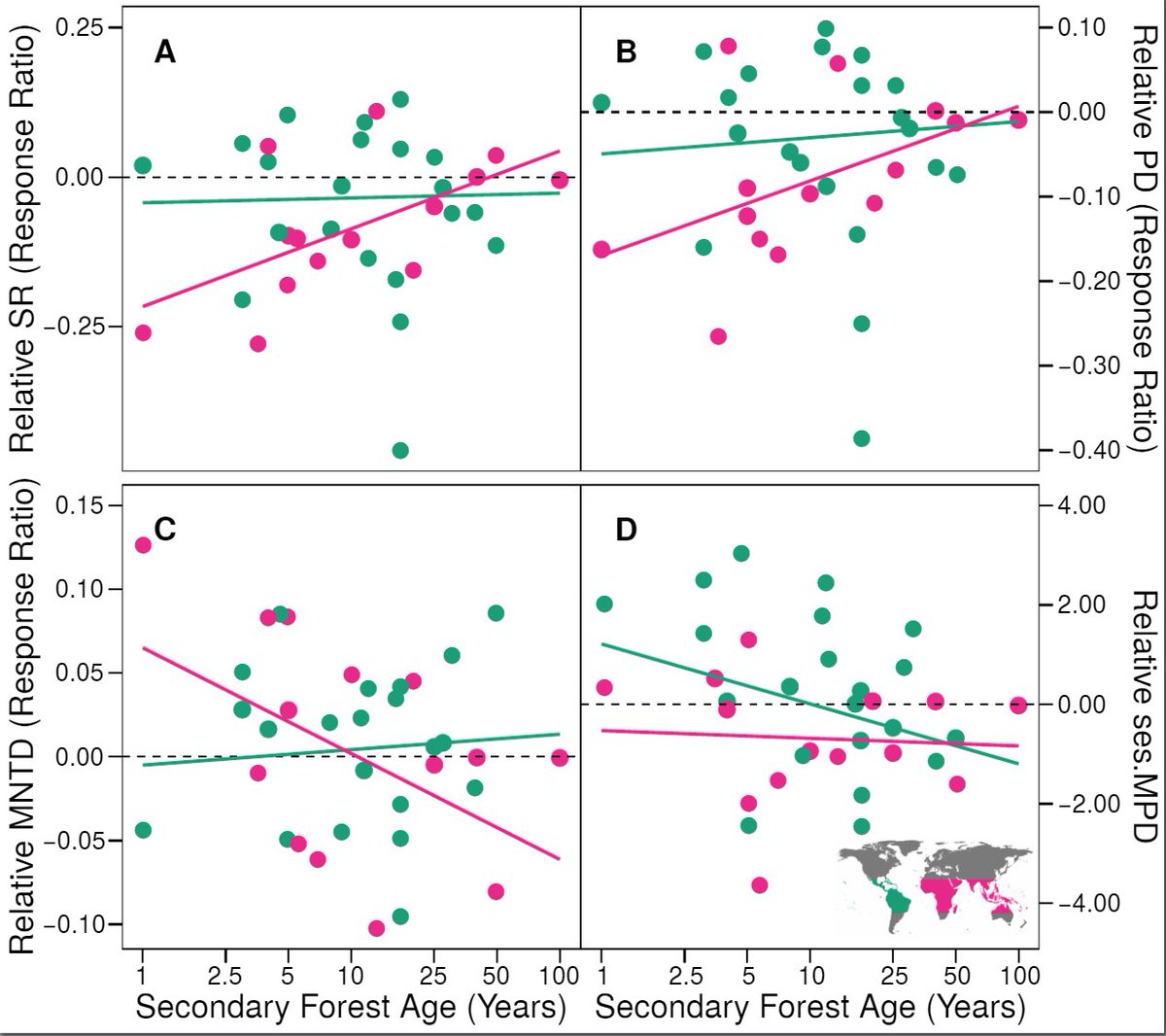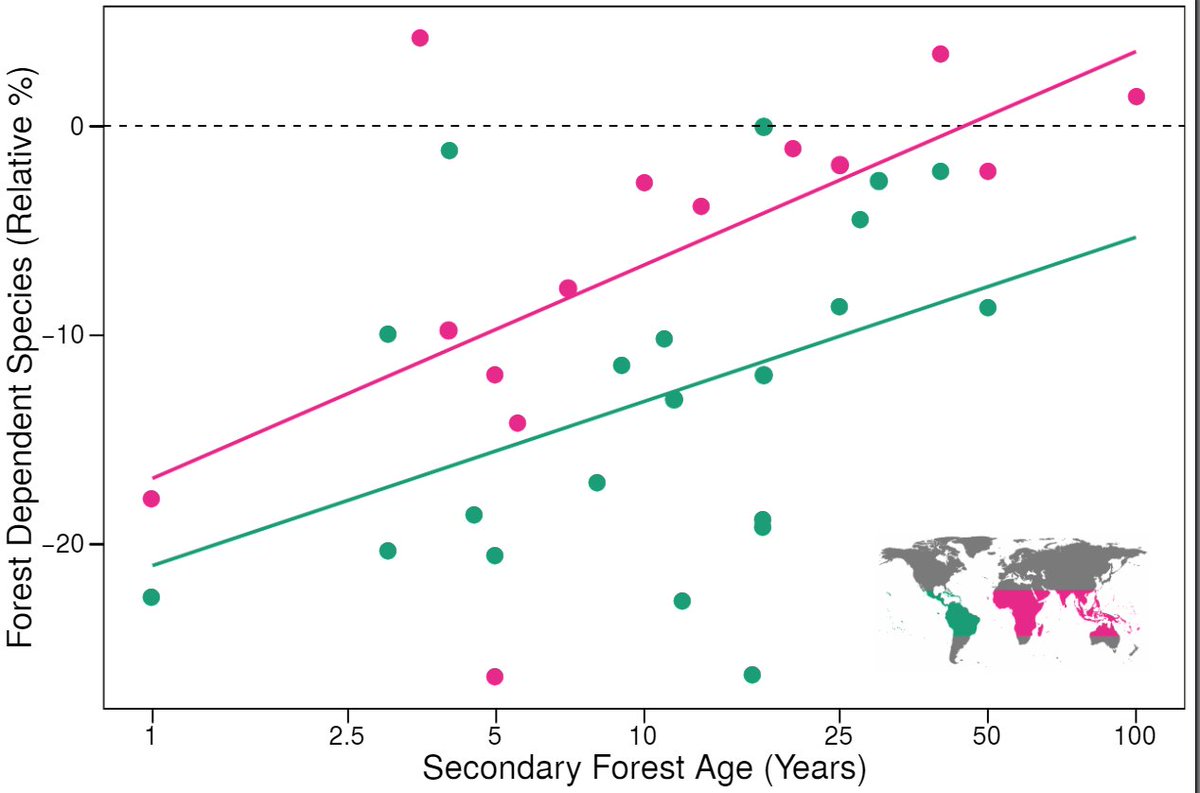Great to see our paper on the effects of tropical secondary forest regeneration bird phylogenetic diversity - led by @EHughes27 - out in @JAppliedEcology! https://besjournals.onlinelibrary.wiley.com/doi/abs/10.1111/1365-2664.13639">https://besjournals.onlinelibrary.wiley.com/doi/abs/1... (1/8)
Quick results from the paper: using a global dataset we found that forest specialists returned to sites over time, but phylogenetic diversity & community composition only showed signs of recovery in Old World sites, but not new World sites. More detailed results to follow...(2/8)
Primary and secondary forests tended to have similar avian species richness and phylogenetic diversity independent of secondary forest age. As time since abandonment increased both species and phylogenetic similarity between primary and secondary forests increased (3/8)
In addition, as the distance between sites increased both species and phylogenetic similarity between primary and sescondary forests was reduced - but only for New World sites, not Old World sites. (4/8)
In the Old World, species richness & phylogenetic diversity increased as secondary forest aged reaching equivalence to primary forest after ~45 years & ~84 years respectively. Secondary forest age did not effect species richness or phylogenetic diversity in New World sites. (5/8)
The proportion of forest specialist species in secondary forests increased in both Old and New world sites, reaching equivalence in the Old World after 45 years of regeneration. In New World sites after 50 years there were still ~8% fewer forest specialists. (6/8)
These results suggest that while secondary forest can play an important role in conserving species it is vital that the characteristics of landscapes are integrated into planning. In addition they highlight the importance of reducing clearance of secondary forest (7/8)
Finally well done @EHughes27 on doing such a great job on this! It was a really fun project to be involved with! (8/8)

 Read on Twitter
Read on Twitter